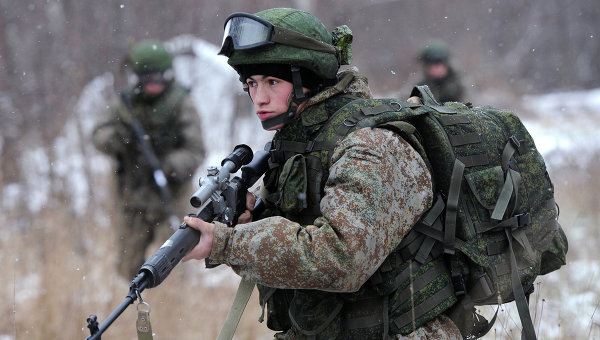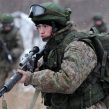
Shoigu Orders ‘Adjustments’ to Russian Combat Training
Publication: Eurasia Daily Monitor Volume: 10 Issue: 110
By:

Since President Vladimir Putin appointed Army-General Sergei Shoigu as Russia’s defense minister in November 2012, a number of subtle changes to the structure and organization of the Armed Forces indicate that the “Serdyukov reform”—a wide-ranging military reform program initiated by previous Defense Minister Anatoly Serdyukov—is no longer in vogue. These have ranged from reversing plans to civilianize military hospitals, reintroducing divisions to a “brigade-based” structure for the Ground Forces as well as instituting regular “surprise” inspection exercises to test combat readiness. However, in late May, Shoigu took an additional step that shows the present leadership of the defense ministry is dissatisfied with a key feature of his predecessor’s reforms: he ordered further adjustments to the system of combat training (Interfax, May 27). In other words, the Serdyukov-era approach to combat training is being modified.
The need to make drastic changes stems from a decision by former Defense Minister Serdyukov in 2009 to close more than 100 military training ranges, while under-investment in the surviving ranges has resulted in continued decay of their infrastructure. According to sources in the defense ministry, most of the remaining training ranges are no longer fit for use. “The infrastructure at most of the Russian army’s ranges is 80–90 percent out of date, and very few of the more than 100 regular shooting and training grounds are ready for the full extent of combat training,” an anonymous defense ministry source told Interfax (Interfax, June 8).
On May 25, Shoigu ordered a series of adjustments to combat training in the Armed Forces, linked to schedules and the planning of the programs. Shoigu referred to the results of the surprise inspection exercises as a means to justify this latest sign that the reform in place since 2009 is now subject to major revisions. Apparently a number of shortcomings in combat training were revealed during these exercises, unknown or ignored by the Serdyukov defense ministry. According to the first deputy defense minister, Army-General Arkady Bakhin, during a visit to Chebarkul in Central Military District (MD), commanders were instructed to modify training schedules and training objectives. This emerged empirically from the surprise inspection exercises, which revealed inadequate combat training planning in the “majority” of major commands, formations and units. Bakhin noted, “Very often, the commanders make decisions with respect to planning of combat training without taking into consideration personnel shortages. This leads to an improper allocation of training ammunition, excessive vehicle use, and wasteful expenditures of petroleum, oil and lubricants” (Interfax, May 27).
Bakhin’s comments are revealing, since he emphasized a direct link to the combat training schedules and the existing “personnel shortages.” This is important for a number of reasons. First, during the Serdyukov reform, senior defense officials constantly claimed that the newly formed Ground Forces brigades were “permanent readiness” formations ready to move within “one hour.” Of course it was already clear to commanders during military exercises in 2009 to 2012 that brigade personnel shortages could create unforeseen problems in the field. Additionally, under Shoigu, there is a new effort to “discover” that the brigades are undermanned and make corrections to combat training schedules accordingly. Bakhin’s argument, therefore, revolves around maintaining a “high intensity” program of combat training for units with 100 percent staff, and in units with shortfalls the burden must be reduced in order to avoid wasting resources. Bakhin also explained that commanders must work hard to receive and integrate “replacement personnel” to alleviate shortages and develop techniques to build unit cohesiveness in order to switch to a wartime table of organization and equipment; he specifically highlighted that the majority of platoon-level and battalion-level commanders are unfamiliar with these issues (Interfax, May 27).
On May 24, the Ground Forces’ commander-in-chief, Colonel-General Vladimir Chirkin, headed a roundtable session with commanders in Central MD to discuss organizing combat training, combat coordination of subunits, as well as raising tactical-echelon officers’ professionalism and the quality of training for junior specialists at district training centers. Over 250 officers were invited to the training methodology course. They were MD deputy commanders; chiefs of MD combat training directorates and missile troop and artillery departments; army and air defense, commanders of joint-service, surface-to-air missile, artillery and missile combined units; special-purpose brigades, Baltic Fleet coastal units; and also commanders of MD directorate brigades and communications brigades (Ministry of Defense website, May 24).
Chirkin said that these officers exchanged ideas and experience concerning “organizing combat training” and in “solving urgent problems,” and offered constructive suggestions on these issues. Chirkin added, that “in the course of the work we discussed a number of the most problematic issues connected with the support of the troops’ combat and mobilization readiness, the organization of the Ground Forces combined units’ combat training, and also outlined possible ways of solving them.” He offered no comment on the underlying weakness of the infrastructure of the existing combat training ranges (Ministry of Defense website, May 24).
Bakhin places great confidence in defense ministry plans to create a combat training center in each MD with a new simulator basis similar to the complex under construction at Mulino, 350 kilometers east of Moscow. He explained that with assistance from the German defense company Rheinmetall, the simulation training center at Mulino will handle up to 30,000 servicemen annually. Its construction will be completed by late 2014, and the second simulator training center will open afterwards at the Ashuluk Range in Southern MD. All components in these centers will be domestically produced, apart from the German-made laser fire and kill simulators (Interfax, May 30).
The importance of Shoigu’s latest adjustment to combat training lies in three key areas: open admission of inadequate planning, recognition of personnel shortages, and an intensification of the combat training cycle. It steps away from the previous reform in so much as it crushes one of its central myths: the Ground Forces brigades formed in 2009 are by no means “permanent readiness” formations, and personnel issues frequently denied by Shoigu’s predecessor are now publicly acknowledged. Yet, the latest “corrections” to the Serdyukov reform have the appearance of stop-gap measures, while senior officials hope for a brighter future commencing around 2014–2015. Nonetheless, in turn this will depend on the success of further changes to the personnel system, recruitment of contract personnel, and ultimately the retention of specialists capable of organizing and implementing the futuristic combat training being prepared at Mulino. The Serdyukov reform has gone, and Moscow simply has no answer on what to do next.




